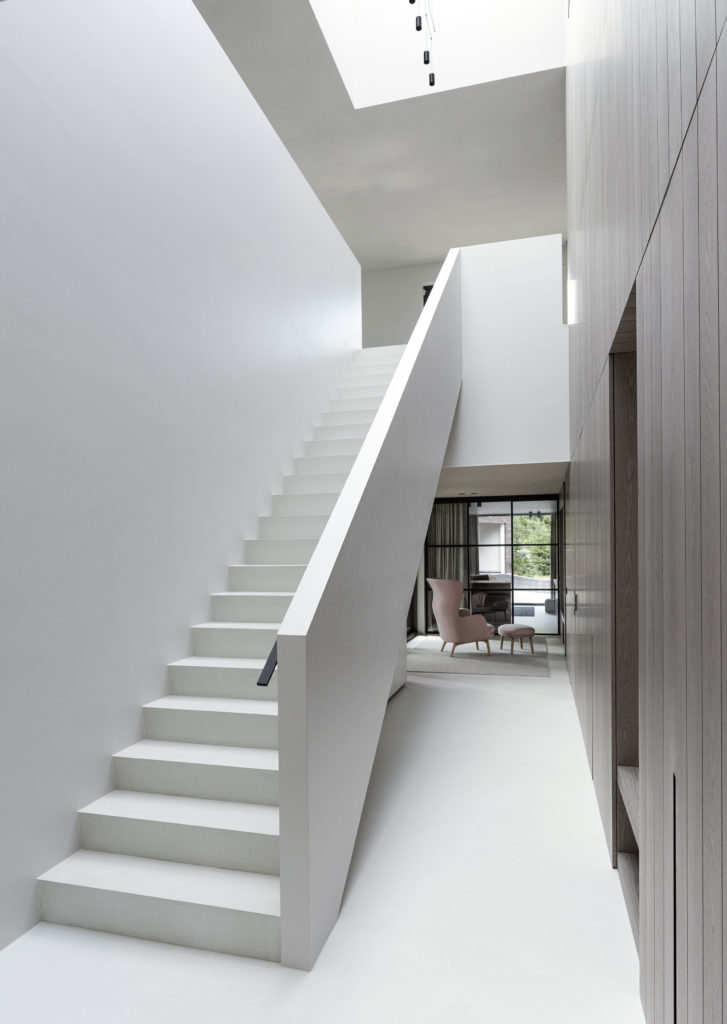Playing with Boxes

Various rounds of iterations were needed, when architects were asked to place two detached houses in place of a demolished one in a single-family house neighbourhood in Espoo – while preserving the old stone fences, rocks and pines that gave the site a temporal perspective. Eventually, the blocks settled down like overlapping matchboxes.

Avanto Architects / Anu Puustinen, Ville Hara
Location Espoo
Gross Area 360 m2 / house
Completion 2019
More photos and drawings of the project →
ARK Architects ANU PUUSTINEN and VILLE HARA, what were the general starting points and constraints for the design of the Matchbox Houses?
AP & VH The gently sloping plot is located near the sea and bordered to the north by the street. The surrounding buildings represent the architecture of single-family houses of different eras. The challenge was to solve two detached houses in place of one demolished house so that the buildings would naturally sit on the plot, providing both houses with privacy and the best views. At the same time, comfortable outdoor areas should be created. Old stone fences, rocks and pines gave the site a temporal perspective.
The commissioners gave free rein to the architecture but wished for a beautiful and durable whole. The sketching showed that houses should not be placed on a plot in the same coordinate system in order to preserve key natural elements. The lower floor settled in a different direction than the upper floor in order to have both sunny outdoor areas and great views.
The blocks settled down like overlapping matchboxes. There is a covered terrace below the upper floor overhangs and a sunny roof terrace over the lower floor roof.
During the design phase, the energy use of the building was simulated and design solutions could be optimised based on the results.

ARK Could you elaborate on the design concept?
AP & VH Arrival to the buildings is gradual. From the street, you enter the courtyard through the stone fence gate and enter the houses’ entrances, using either garden stairs or a paved path. On the street side of the matchboxes there are facade retreats that form the entrance canopies. The entrance lobby faces a long view through the house and the “stairway to heaven”. The passage is guided smoothly to the upper floor of the building where the main spaces are located. The floors are joined by an open, glass-covered space, where daylight is screened. The atmosphere of the interior changes with the weather and the cycle of the day. The upper floors of the houses offer views of either the wind-blown pines or the sea. At the heart of the buildings is a warm wood core with smaller, more private spaces inside. The fixed furniture is integrated into the wood core. In one house the wood core is made of oak and in another the gray larch.

ARK The houses have a strong sense of materiality. What kind of materials did you use?
AP & VH The buildings were to be rooted in rocky pine forests. Facade brickwork is randomly live. The type of brick is a long, low, rough brick with variegated burn and shades resembling pine bark. The facades and the underside of the overhangs are thinly grouted with black compact mortar without post-sealing. When doing this, the brick surface is emphasised while the seams are deeper and shaded. ↙